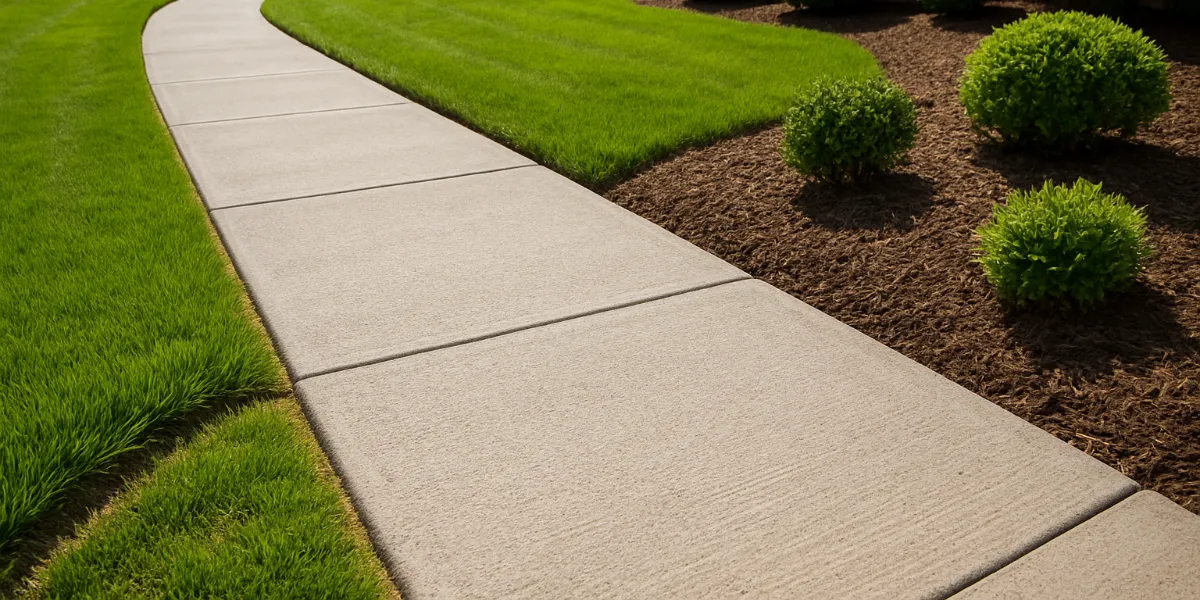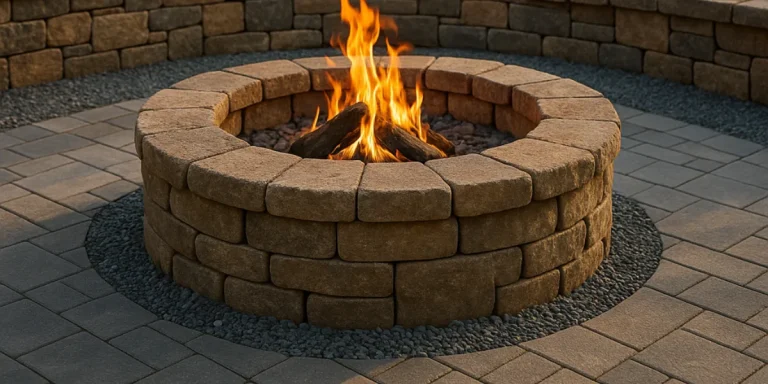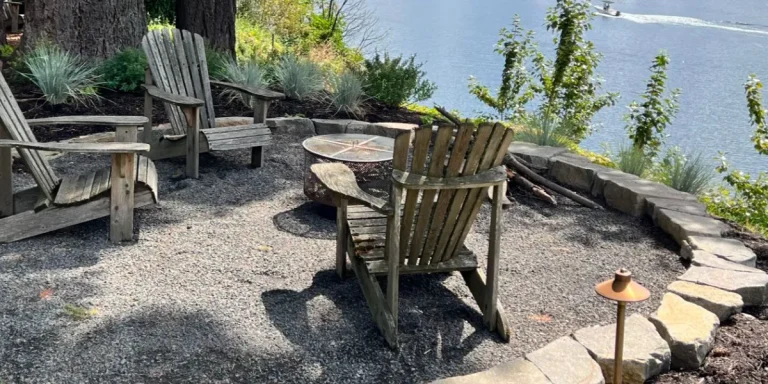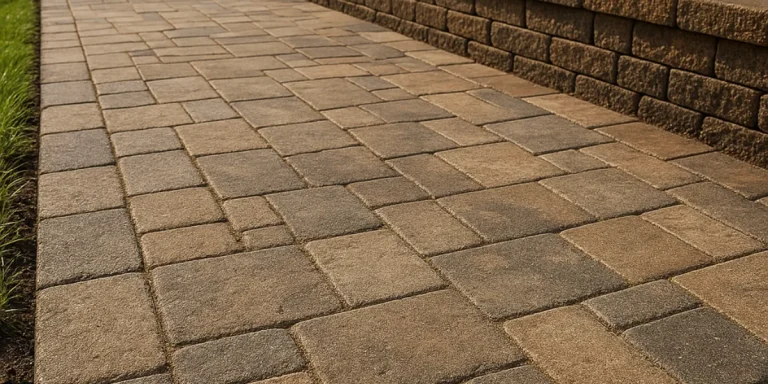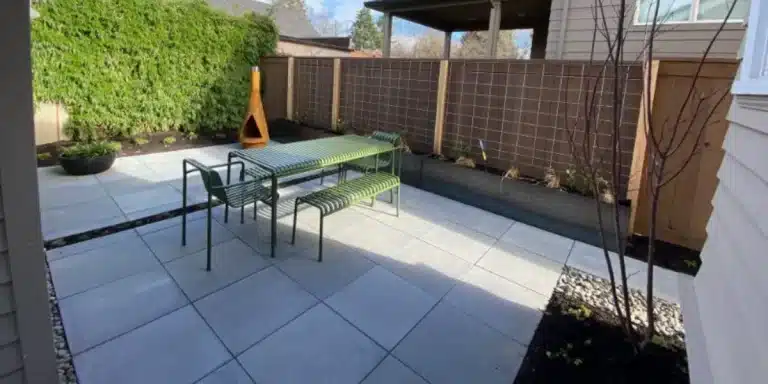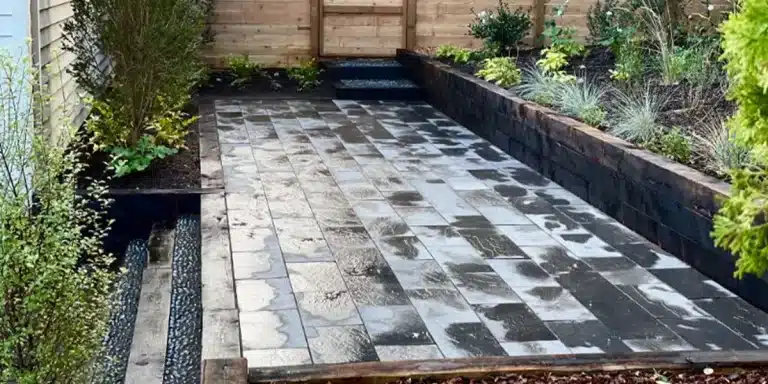How to Stop Your Paver Walkway From Shifting
A professionally installed paver walkway adds function and curb appeal to your landscape—but over time, you might notice that your pavers start to shift, lift, or separate. This isn’t just a cosmetic issue. Uneven pavers create tripping hazards, allow water to pool, and signal deeper problems with the base or drainage beneath your walkway.
At White Oak Landscapes, we help homeowners in Oregon City, West Linn, and surrounding areas diagnose and fix shifting paver walkways for good. If you're tired of repairing the same sections every season, here’s what you need to know.
Why paver walkways shift
A well-built paver walkway should remain stable for many years—but if you’re seeing uneven surfaces, shifting stones, or spreading patterns, the problem is likely below the surface. Pavers depend on a properly prepared and well-drained foundation to stay in place. Once that foundation is compromised, movement becomes inevitable.
Let’s break down the most common reasons paver walkways start to shift—and what they look like in real-world landscapes.
1. Poor base preparation
This is the most common cause of shifting pavers. The base layer beneath your walkway is what supports the weight of the pavers, people, and weather. If the installer skipped steps during excavation or didn’t compact the layers correctly, your walkway will start to settle unevenly over time.
Common issues caused by poor base prep include:
-
-
- Pavers that feel loose, rock, or tip underfoot
- Uneven surfaces that form dips, humps, or trip hazards
- Visible spacing or spreading between pavers
- Puddles forming in low areas after rain
-
This type of failure is especially common in DIY installations or projects done without professional equipment. A solid paver base should include at least 4–6 inches of compacted gravel (more in clay soils), a layer of bedding sand, and geotextile fabric if needed to separate soil from gravel.
2. Inadequate edge restraints
Edge restraints are the unsung heroes of paver installations. They lock the pavers in place and prevent them from migrating outward. Without proper edge restraints, even small amounts of foot traffic, rain, or frost movement can start to break the pattern apart.
Signs of missing or failing edge restraints:
-
-
- Pavers at the outer edge shifting outward
- Curved or herringbone patterns beginning to unravel
- Gaps opening up between pavers
- Loose bricks near corners or curves
-
In Oregon’s climate, where freeze-thaw cycles and heavy rainfall are common, edge restraints need to be both strong and properly anchored into the base.
3. Water infiltration and poor drainage
Water is the enemy of a stable paver base. When rainwater or irrigation runoff seeps below your walkway without a way to drain, it gradually washes away the bedding sand and gravel foundation. This leads to sinking, heaving, or spreading of pavers.
Causes of poor drainage include:
-
-
- Walkways that are too flat or sloped in the wrong direction
- Downspouts that discharge water directly onto or near paver areas
- Lack of drainage channels, swales, or French drains
- Saturated soil that stays wet long after rain
-
In regions like Clackamas County, where clay soils hold water longer and rain is frequent, drainage is a critical part of any long-lasting hardscape.
4. Clay-heavy or unstable soil
Here in the Willamette Valley, we frequently encounter dense, clay-heavy soils. This type of soil naturally holds onto water and swells when wet, then shrinks when dry. That constant expansion and contraction puts pressure on the base material and the pavers above, leading to shifts and instability.
What this looks like:
-
-
- Pavers slowly rising or sinking in specific areas
- Seasonal movement—your walkway looks worse after winter or a wet spring
- Cracking or separation of edging materials caused by soil movement
-
Clay soil can be managed with deeper excavation, soil stabilization fabrics, and more robust base construction—but skipping those steps is a recipe for problems down the line.
5. Tree roots or organic matter below the surface
Nature is persistent. If tree roots are growing underneath your walkway, they can lift pavers over time. Likewise, if the base contains organic debris (like buried roots or composted soil), that material will eventually decay and create voids.
You may notice:
-
-
- Raised sections of your walkway, especially near trees or shrubs
- Sudden dips or collapse in isolated areas
- Pavers that shift seasonally as roots grow
-
In some cases, pavers are laid too close to mature trees without accounting for root expansion. In others, organic soil wasn't removed or screened before installation.
How we fix and prevent shifting pavers
White Oak Landscapes has repaired and rebuilt dozens of unstable paver walkways throughout Oregon City, West Linn, Gladstone, and nearby communities. Our approach is based on long-term integrity—not quick fixes that fail after the next rainy season.
Whether your walkway has just begun to shift or is showing significant settling, we follow a detailed and proven process to correct the problem and prevent it from coming back.
1. Evaluate and excavate the affected area
Every successful repair starts with an in-depth assessment. We inspect the full walkway, identify the underlying cause (such as poor base prep, drainage problems, or root interference), and then create a targeted plan of action.
If needed, we carefully lift the affected pavers to avoid breakage and preserve the original aesthetic. Our goal is to reuse as many of your existing materials as possible.
This stage includes:
-
-
- Documenting and photographing the layout for accurate reinstallation
- Safely removing sunken, loose, or lifted pavers
- Checking for damaged or worn pavers and replacing them with matches
- Excavating down to the sub-base for a clear view of the foundation problems
-
This step allows us to correct issues at the root—literally and figuratively.
2. Rebuild the base the right way
A strong base is everything when it comes to paver stability. We never reuse existing base material unless it's clean and well-compacted. Instead, we rebuild the foundation using industry-approved methods and materials designed for durability.
Our base rebuilding process typically includes:
-
-
- Excavating to a proper depth (often deeper for clay soils or frost-prone zones)
- Installing geo-fabric to separate native soil from gravel and prevent contamination
- Adding crushed gravel in compacted 2–3 inch lifts to build a firm foundation
- Screeding a level layer of sharp sand (not play sand) for final paver bedding
- Installing edge restraints to secure the perimeter and maintain shape over time
-
This creates a resilient platform that resists shifting, drainage issues, and heavy foot traffic.
3. Improve drainage to protect your walkway
In many Clackamas County landscapes, poor drainage is a major contributor to paver movement. After rebuilding the base, we look at the surrounding area to prevent future water intrusion.
We may recommend and install:
-
-
- French drains alongside the walkway to handle subsurface water
- Dry creek beds to manage and beautify surface runoff paths
- Catch basins at low points to collect and redirect water
- Downspout extensions to steer roof water away from hardscape edges
-
These solutions are seamlessly integrated into your landscape and help protect your investment year-round.
4. Reset the pavers and finish the surface
With a solid base and proper drainage in place, we reinstall your pavers with precision. Whether we're recreating a curved path or matching an intricate pattern, alignment and consistency are key.
This finishing process includes:
-
-
- Placing each paver according to the original pattern or design
- Checking level and alignment frequently to avoid future trip hazards
- Sweeping polymeric sand into the joints to lock pavers in place
- Compacting the surface to set the joints and prevent movement
-
Polymeric sand also helps resist weeds, insects, and erosion between the stones—making your walkway easier to maintain.
For additional protection, we offer optional sealing services. A quality sealant enhances the color of your pavers, blocks moisture, and reduces staining from leaves, foot traffic, or irrigation.
Preventative upgrades worth considering
If your walkway has shifted once, it’s more likely to happen again unless you address the root cause. Many of our clients choose to use this opportunity to make functional or aesthetic upgrades such as:
-
- Adding a stone border or accent pavers for durability and design
- Connecting the walkway to a new patio, entry landing, or outdoor living space
- Installing low-voltage lighting for safety and ambiance
At White Oak Landscapes, we offer complete hardscaping services and can help you transform a problem area into an upgraded feature.
Proudly serving Oregon City and surrounding areas
White Oak Landscapes provides professional paver installation, walkway repair, and hardscaping services throughout:
-
- Oregon City
- West Linn
- Lake Oswego
- Happy Valley
- Clackamas
- Milwaukie
- Tualatin
- Wilsonville
- Canby
- Gladstone
- Beavercreek
- Estacada
- Damascus
Get your walkway fixed the right way
Tired of tripping over uneven pavers or replacing them every season?
Let White Oak Landscapes rebuild your walkway the right way—with a stable base, proper drainage, and professional-grade materials. Call today to schedule your consultation or request a quote online.
We proudly serve Oregon City and surrounding communities with expert landscape and hardscape solutions built to last.

